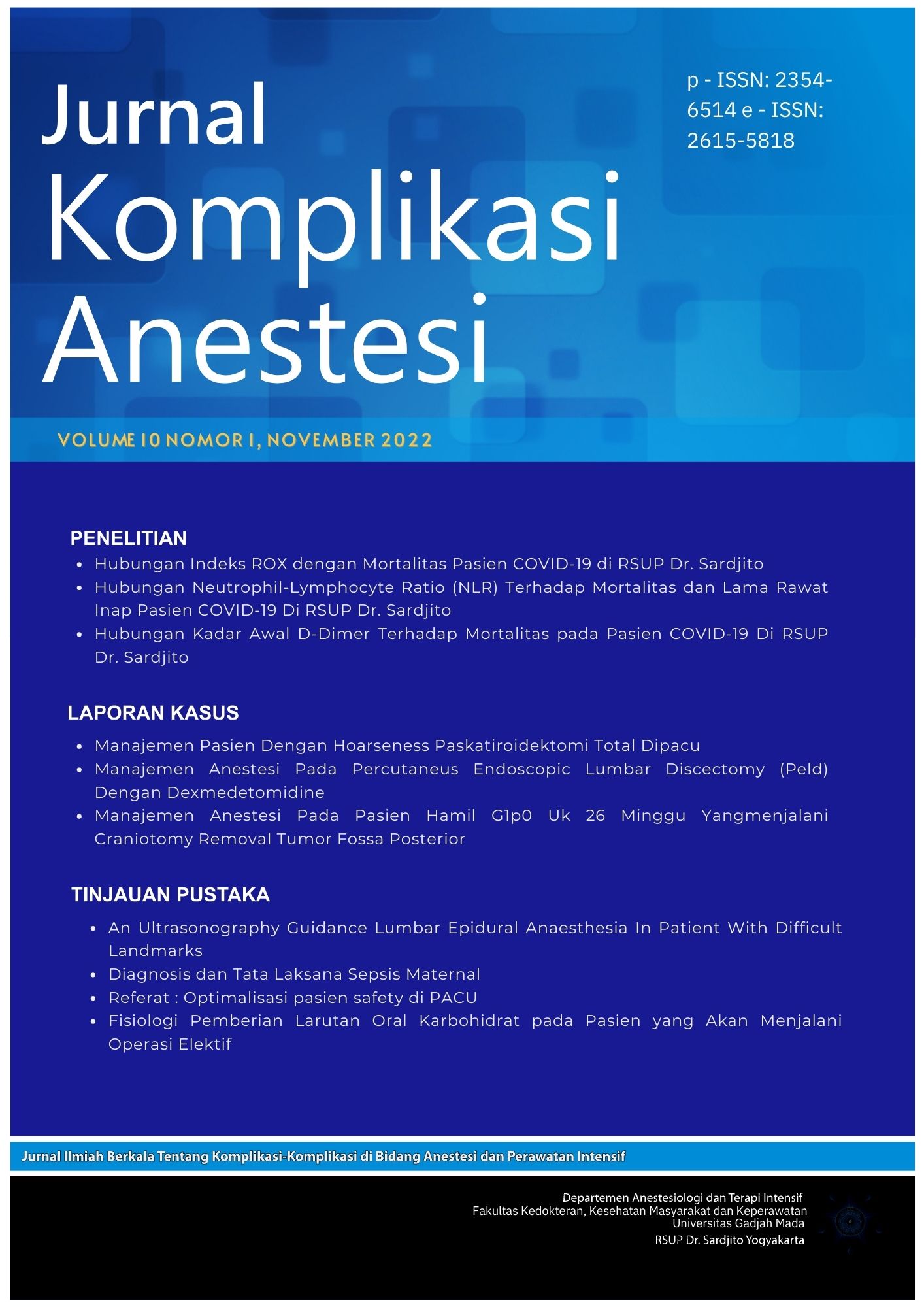Manajemen Pasien dengan Hoarseness Paskatiroidektomi Total Dipacu
Abstract
look at the clinical appearance of the patient who appears hoarse after extubation, the
voice becomes softer, the ability to cough is not strong but the respiration rate is still
normal 18 times/minute with a saturation of 98% then The probability of injury is
unilateral. Pathophysiologically hoarseness can mean there is a possibility of injury to
either the bilateral superior laryngeal nerve or unilateral recurrent laryngeal nerve (RLN).
Then the possibility of injury is unilateral RLN unilateral in this patient. Ideally the
differential diagnosis of postoperative hoarseness requires examination such as simple
laryngoscopy, stroboscopy or intra and extralaryngeal electromyography. In practice it is
difficult to distinguish between damage caused by thyroid surgery and anaesthetic
factors. There are a number of anesthetic-related factors that may predispose to hoarseness in these patients such as the risk of doubling in patients who are intubated for
3-6 hours (in patients 3.5 hours). This could be ruled out if we could measure the ET cuff
pressure during surgery. While from the surgical factor there are several risk factors such
as surgery on the neck area (thyroid surgery), excessive neck extension during surgery,
pulling the RLN causing injury. In the last operation the position of the neck extended, for
RLN in the operation report has been identified. It is better to assess vocal cord function
prior to extubation, such as a cuff leak test or insertion of a flexible intubation scope
through the lumen of the ET tube.
Copyright (c) 2022 Danur Adi Kusuma, Bhirowo Yudo Pratomo, Akhmad Yun Jufan

This work is licensed under a Creative Commons Attribution-NonCommercial-ShareAlike 4.0 International License.
The Contributor and the company/institution agree that all copies of the Final Published
Version or any part thereof distributed or posted by them in print or electronic format as permitted herein will include the notice of copyright as stipulated in the Journal and a full citation to the Journal.

















